Clearly, the heat losses between the surface and the
The research paper published by IJSER journal is about ANALYTICAL METHOD FOR CALCULATION OF TEMPERATURE OF THE PRODUCED WATER IN GEOTHERMAL WELLS 1
ISSN 2229-5518
ANALYTICAL METHOD FOR CALCULATION OF TEMPERATURE OF THE PRODUCED WATER IN GEOTHERMAL WELLS
F.P. Codo, A. Adomou and V. Adanhounmè
Abstract
As fluids move through a wellbore, there is a transfer of heat between the fluids and the earth due to the difference betwee n the fluids and
the geothermal temperatures. This type of heat transmission is involved in drilling and all producing operations .
H. J. Ramey developed in 1962 an approach of solution which investigated the wellbore heat transmission to provide engineerin g methods useful in production and injection operations.
Nowadays the energy production in the case of the renewable energies particularly in the case of the geothermal energy, which has generated a considerable interest the past few years , we need not only quantitative but qualitative knowledge of wellbore he at transfer too with the invention of computer technologies.
This study, which presents a simple mathematical estimation of the temperature of produced geothermal hot water, is the refinements of th e so-called Ramey-theory. The solution supposes that the heat transfer in the wellbore is steady-state, while the transfer to the earth is unsteady radial conduction.
Fields and calculated results of Hungarian production wells of Zsori-4 and Bogács (4-17) , are presented and analyzed to establish the appropriateness and the usefulness of the study.
keywords: Calculation of temperature; produced water, geothermal well, analytical approach .
IJSER © 2012 http://www.ijser.org
The research paper published by IJSER journal is about ANALYTICAL METHOD FOR CALCULATION OF TEMPERATURE OF THE PRODUCED WATER IN GEOTHERMAL WELLS 2
ISSN 2229-5518
The geological and drilling researches proved that the geothermal gradient depends on the depth i.e. the temperature of the produced hot water varies from the bottomhole to the wellhead.
Clearly, the heat losses between the surface and the![]()
![]()
![]() + ρ
+ ρ
which leads to
(3)![]()
![]()
![]()
![]()
![]()
production layer can be extremely important during the process. The purpose of the present study to refine the approach of Ramey for wellbore heat transmission. In his theory, he considered a mean geothermal gradient, a mean density of layers, a mean specific heat value, a mean thickness of layers to calculate the temperature.
On the over hand, we consider the flowing parameters,
the hydrogeologic characteristics of the flowing hot
water and the hydrogeologic characteristics of the layers
The following equations were developed under the assumptions that physical and thermal properties, the earth and wellbore fluids do not change with the temperature , the heat will transfer radially in the earth and the heat transmission in the wellbore is rapid, comparing to the heat flow in the geological formation, and thus, can be represented by steady-state solutions.
The internal energy equation of the flow is defined by
Neumann differential equation as follows:![]()
![]() ) (1)
) (1)
where E the internal energy, ρ the produced hot water density, F the tension tensor of fluid flow, S the deformation tensor, K the thermal conductivity and T the temperature.
If the fluid flow is incompressible then ![]()
![]() , where
, where ![]() is the specific heat at constant volume of
is the specific heat at constant volume of
fluid. The term (F:S) is the product of the work due to the variation of volume. The work due to the friction can be negligible. Thus we can write F:S=0.
The right hand member of the equation (1) defines the
heat transfer from the fluid to the earth. If we consider K as the constant thermal conductivity and expressing the variation of the internal energy ![]() as follows
as follows![]()
![]()
![]()
![]()
The energy equation takes the form
Where ![]()
![]() the velocity of the flow, gradT =(0,0,
the velocity of the flow, gradT =(0,0,![]()
)
We adopt the following assumptions:
• the domain V and the surfaces A1 , A2 are defined as :![]()
![]()
![]()
![]()
![]()
![]()
![]()
![]()
![]()
![]()
![]()
![]()
![]()
![]()
![]()
![]()
![]()
(8)
•the vertical axis of symmetry of the well coincides
with the z-axis oriented down whose origin lies on the surface.
•the heat conduction is a slow transient heat![]()
conduction; thus ![]() .
.
Integrating the equation (3) on the domain V , we can![]()
![]()
write![]()
![]()
![]()
![]()
![]()
which, using the Gauss-Ostrogradski surface integral theorem, leads to![]()
![]()
![]()
![]()
![]()
According to the continuity equation, we can write![]()
![]()
Where and stand for the two cross-sections perpendicular to the domain V. We consider that the temperatures of the fluid flow in the depths z and z+dz are respectively T and T + dT. Then the heat conduction ![]() can be written as follows:
can be written as follows:![]()
![]()
![]()
![]()
![]()
![]()
![]()
![]()
![]()
![]()
During the heat transfer, the heat conduction out the casing wall ![]() must be taken into account and computed as follows:
must be taken into account and computed as follows:![]()
![]()
![]()
![]()
![]()
![]()
![]()
Where ϕ is the over-all heat transfer coefficient. According to the continuity equation, the heat loused by the fluid is equal to the heat transferred by the casing, i.e. which leads to
Implying
IJSER © 2012 http://www.ijser.org
The research paper published by IJSER journal is about ANALYTICAL METHOD FOR CALCULATION OF TEMPERATURE OF THE PRODUCED WATER IN GEOTHERMAL WELLS 3
ISSN 2229-5518
![]()
![]()
![]()
![]()
According to Ramey, the rate of heat conduction from the casing to the surrounding formations can be expressed as follows:![]()
![]()
Where is the dimensionless function depending of Fourier number, ![]() is the geothermal temperature which is linear function of the depth, i.e.
is the geothermal temperature which is linear function of the depth, i.e. ![]()
![]()
![]()
![]()
with ![]() , the temperature on the lower limit the layer. In the surrounding formations the heat conduction rates are equals; then we can write
, the temperature on the lower limit the layer. In the surrounding formations the heat conduction rates are equals; then we can write![]()
![]()
Which leads to:![]()
![]()
![]()
Summing the equations (16) and (19), we can determinate the temperature ![]() of the produced hot water as follows:
of the produced hot water as follows:![]()
![]()
![]()
Setting
we can write![]()
![]()
![]()
![]()
![]()
![]()
![]()
![]()
![]()
![]()
![]()
![]()
With the boundary condition, z=H, ![]() ; and using the method of variation of constants, the solution of the equation(21) takes the following form:
; and using the method of variation of constants, the solution of the equation(21) takes the following form:
where is the temperature of the produced water on the lower limit of the layer.
The obtained formula allows us to calculate the temperature of the produced water varying from the bottomhole to the wellhead, knowing the temperatures of the lower limit of the layer and those of the produced water on the lower limit of the layer.
Before calculating the temperature ![]() , the coefficient
, the coefficient
ϕ can be determinated by the following formula:![]()
![]()
![]()
![]()
![]()
![]()
![]()
![]()
![]()
(23)
Where ![]() is the heat transfer coefficient between the casing and the hot water. In the case of hydraulically
is the heat transfer coefficient between the casing and the hot water. In the case of hydraulically![]()
smooth pipe we can calculate it with as follows![]()
where ![]() is the Reynolds number
is the Reynolds number ![]()
![]()
![]()
the water density and ![]() the water viscosity. is the Prandtl number.
the water viscosity. is the Prandtl number.![]()
In the case of turbulent flow, h will be calculated as follows:![]()
![]()
![]()
![]() the resistance coefficient of the casing,
the resistance coefficient of the casing, ![]() the roughness coefficient of the casing
the roughness coefficient of the casing
The ![]() the Fourier transient function may be
the Fourier transient function may be![]()
calculated as follows. If the Fourier number![]()
![]()
![]()
![]()
![]()
![]()
When the water production begins, then![]()
![]()
If ![]() , then
, then![]()
is usable.
![]()
![]()
Between the casing and the layers there is a heat conduction , which may be expressed as follows:
Where ![]() is the conduction coefficient of the insulator which is in the annulus.
is the conduction coefficient of the insulator which is in the annulus.![]()
![]()
If we have fluid between the tubing and the casing and neglecting the internal energy, the heat transfer coefficient may be calculated by the following formula;
The symbol is the Grashof number can be calculated as follows:![]()
![]()
And![]()
( See figure 1; figure 2 and figure 3 for the different radius, temperatures used in the paper)![]()
IJSER © 2012 http://www.ijser.org
The research paper published by IJSER journal is about ANALYTICAL METHOD FOR CALCULATION OF TEMPERATURE OF THE PRODUCED WATER IN GEOTHERMAL WELLS 4
ISSN 2229-5518
T
Tf
T1K
T2B
TF
r
calculate a sample calculation of the temperature of
the geothermal production wells of ZSORI and of
BOGÁCS .
The thermal hot water well Zsori-4 was drilled in 1969 and was 562,5m deep. The bottomhole measured temperature was 54,5 °C and the flowing hot water measured temperature on the wellhead was 49°C. In the case of the annulus was filled of thermal water, the calculated temperature on the wellhead is 54,23°C.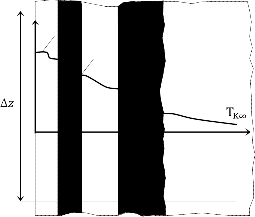
Figure 1 : Nomenclature of temperatures![]()
![]()
![]()
![]()
![]()
![]()
![]()
![]()
![]()
![]()
![]()
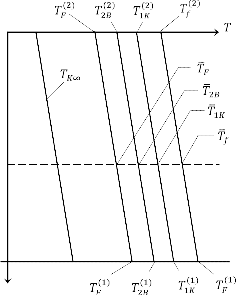
![]()
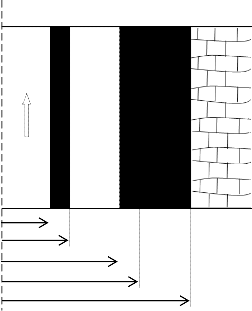
Figure 2 : Different temperatures for iterations
![]()
![]()
![]()
![]()
Cement![]()
![]()
![]()
![]()
R1B
R1K
R2B
R2K
RF
Figure 3: Different used radius
Using this method for calculation of geothermal hot
water by computering the formulas above , we
IJSER © 2012 http://www.ijser.org
The research paper published by IJSER journal is about ANALYTICAL METHOD FOR CALCULATION OF TEMPERATURE OF THE PRODUCED WATER IN GEOTHERMAL WELLS 5
ISSN 2229-5518
40 | 1.20 | 1900 | 860 |
5 | 1.30 | 1900 | 921 |
28 | 0.90 | 1900 | 850 |
168 | 0.84 | 1800 | 840 |
3 | 0.84 | 1800 | 840 |
36 | 0.84 | 1800 | 840 |
1 | 0.90 | 1900 | 860 |
![]()
![]()
![]()
![]()
![]()
![]()
![]()
![]()
![]()
![]()
![]()
![]()
The results are in the following table.
Depth (m) | Temperature of layer(°C) | Temperature of Fluid (°C) |
0 | 10 | 54,23 |
1,5 | 10,09 | 54,23 |
15,0 | 11,30 | 54,25 |
66,0 | 14,37 | 54,33 |
71,0 | 14,81 | 54,33 |
199,0 | 25,50 | 54,45 |
217,0 | 26,54 | 54,46 |
233,0 | 27,97 | 54,47 |
240,0 | 28,38 | 54,48 |
267,0 | 30,80 | 54,50 |
307,0 | 33,30 | 54,52 |
312,0 | 33,59 | 54,53 |
340,0 | 35,93 | 54,54 |
508,0 | 51,01 | 54,59 |
511,0 | 51,28 | 54,59 |
547,0 | 54,51 | 54,59 |
562,5 | 54,59 | 54,59 |
![]()
![]()
![]()
![]()
![]()
![]()
![]()
![]()
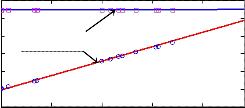
60
50
Fluid ![]()
![]()
40
30 Rock
20
10
0
0 100 200 300 400
Depth (m)
Production well of ZSORI
The thermal hot water well of Bogács was drilled in
1959 and was 482m deep. The bottomhole temperature
was 76,6 °C and the flowing hot water measured temperature on the wellhead was72,8 °C. In the case of the annulus was filled of thermal fluid, the calculated temperature on the wellhead is 75,90°C.
The results are in the following table.
IJSER © 2012 http://www.ijser.org
The research paper published by IJSER journal is about ANALYTICAL METHOD FOR CALCULATION OF TEMPERATURE OF THE PRODUCED WATER IN GEOTHERMAL WELLS 6
ISSN 2229-5518
461,0 | 75,36 | 76,66 |
482,0 | 76,66 | 76,66 |
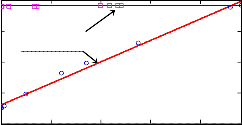
80
60 Fluid Rock
40
20
0
0 100 200 300 400
Depth (m)
Production well of BOGACS
The results of Zsori geothermal well show that , the calculated temperature is very low than the field temperature we measured. The explanation of that situation may be the high thickness of sand layers and clay layers, moreover, because of the high porosity and the high permeability of the sand layers, in the geothermal well, a big part of the heat transfer is convection and not conduction as we supposed.
About the results of Bogács geothermal well, there is a
difference between the calculated temperature and the field temperature, because in fact the heat transfer is the combination of convection and conduction
The results show, how the cooling of the geothermal
water is going on from the bottomhole to the wellhead
of the wells.
Through the results, we remarked that, some hours
after the production of hot water in the wells, the temperature on the wellhead depends of the flow.
For high flow, we remarked that the water cooling is
very low. To do a way with the hydrodynamic perturbations between the wells and layers, it is advised to put in the annulus insulating mortar. This paper helps to know exactly the theoretical hot water temperature and permits to disposition to reduce heat losses.
In this paper, we have succeeded in presenting a sample mathematical calculation of the temperature of produced geothermal hot water, by refining the so- called Ramey-theory.
With this method, we arrived to calculate the
temperature in the lower limit and on the upper limit of each layer from the bottomhole to the wellhead of geothermal hot water producing wells.
This paper gives opportunity to do a way with the
hydrodynamic perturbations between the wells and layers, by using in the annulus, insulating mortar. This paper helps to know exactly the theoretical hot water temperature and permits to disposition to reduce heat losses.
References
[1] Schlichting H. Boundary Layer Theory; New-York, Mc Graw
Hill, 1968
[2] Knudsen J.G. – Katz D.L.: Fluid Dynamics and Heat transfer; New-York, Mc Graw Hill, 1958
[3] Pedlosky, J. Geophysical Fluid Dynamics. Springer. New York. [4] C. Rogers and W. F. Ames, Nonlinear Boundary Value Problems in Science and Engineering. Academic Press. New York.
1989.
[5] Roshenow W. M. –Hartnett J.P. Handbook of Heat transfer, New-York, Mc Graw Hill, 1973
[6] Carslaw H.S.- Jaeger J.C.; Conduction of Heat in solids; Oxford
University Press, Amen House, London 1950
[7] Schneider L.S., Transfer of Heat in solids, Oxford University
Press, Amen House, London 1950
[8] Nowak T.J. The estimation of water injection profiles from temperature surveys; Trans. AIME (1953) 198, 203
[9] Bird J.M. ; Interpretation of temperature Logs in water and gas injection wells and gas producing wells; drilling and producing Prac. (1954) 187
[10] Moss J.T.- White P.D.; How to calculate temperature profiles
in a water-injection sell; Oil and Gas journal, 1954; 11, 174
[11] H.J. Ramey, Jr ; Wellbore heat transmission; Journal of petroleum Technology, April 1962
[12]T. Boldizsár; Bányászati kézykönyv I-III; Műszaki
Kőnyvkiado, Budapest 1956
[13] P{pai J.; Termelőkutak és vezetékek hőmérsékletviszonyai
stacionér {llapotban, Kőolaj és főldg{z, 1971
[14]Bobok E.; Geotermikus Energiatermelés, Tankőnyvkiadó ; Budapest 1987
[15]B.P.Demidovich-I.A.Maron; Computational Mathematics, Editions MIR 1987
[16] C.R. Smith; Secondary oil recovery; Remhold Publishing
Corporation; New York, 1984
[17]A. Léontiev; Théorie des échanges de chaleur et de masse ; Editions MIR, Moscou, 1987
[18] Pápai J.; A szénhidrogénkutak hőmérsékletviszonyai, OMBKE, Budapest, 1984
[19]Bobok E.; Fluid Mechanics for Petroleum Engineers; Akadémiai Kiadó, Budapest 1987
He is currently Assistant Professor of Applied Fluid Mechanics and Hydraulics in the Department of Civil Engineering at the University of Abomey-Calavi, UAC, Benin.
His principal research interests are applied fluid mechanics and hydraulics at the Applied Mechanics and Energetic Laboratory.
e-mail:fdepaule2003@yahoo.fr
IJSER © 2012 http://www.ijser.org
The research paper published by IJSER journal is about ANALYTICAL METHOD FOR CALCULATION OF TEMPERATURE OF THE PRODUCED WATER IN GEOTHERMAL WELLS 7
ISSN 2229-5518
He is currently Assistant Professor of mechanical theory of continua at the Technological Institute of Lokossa-University of Abomey-Calavi.
His principal research interests are applied mechanics
and theory of gravitation.
e-mail:denisadomou@yahoo.fr
He is currently Assistant Professor of Variational Calculus and
Advanced Probability at the International Chair of Mathematical Physics and Applications-University of Abomey-Calavi, Benin. His principal research interests are applied mechanics, partial differential equations and optimal control in the International Chair of Mathematical Physics and Applications.
e-mail:adanhounm@yahoo.fr
IJSER © 2012 http://www.ijser.org